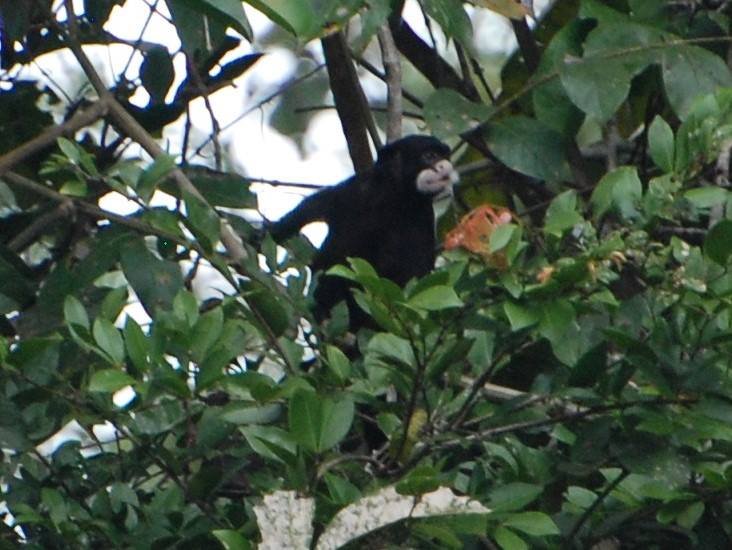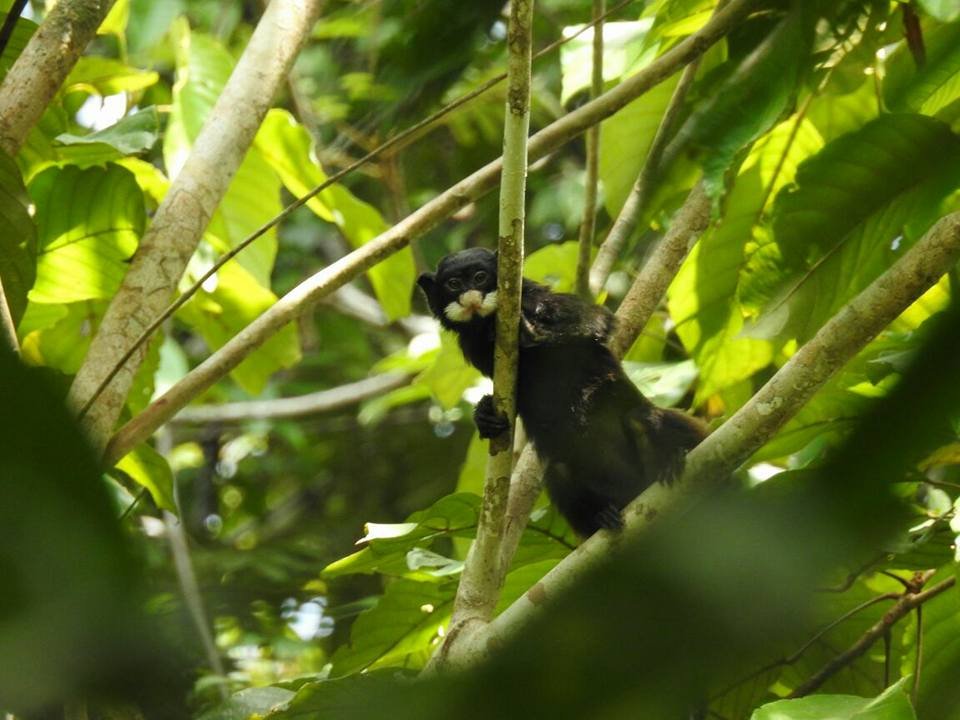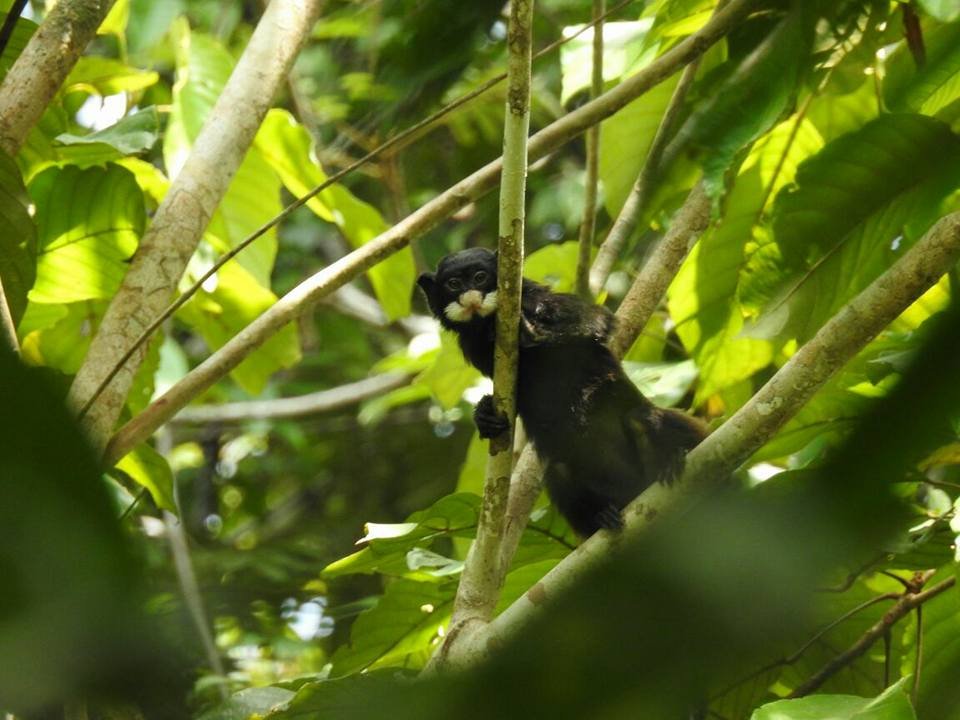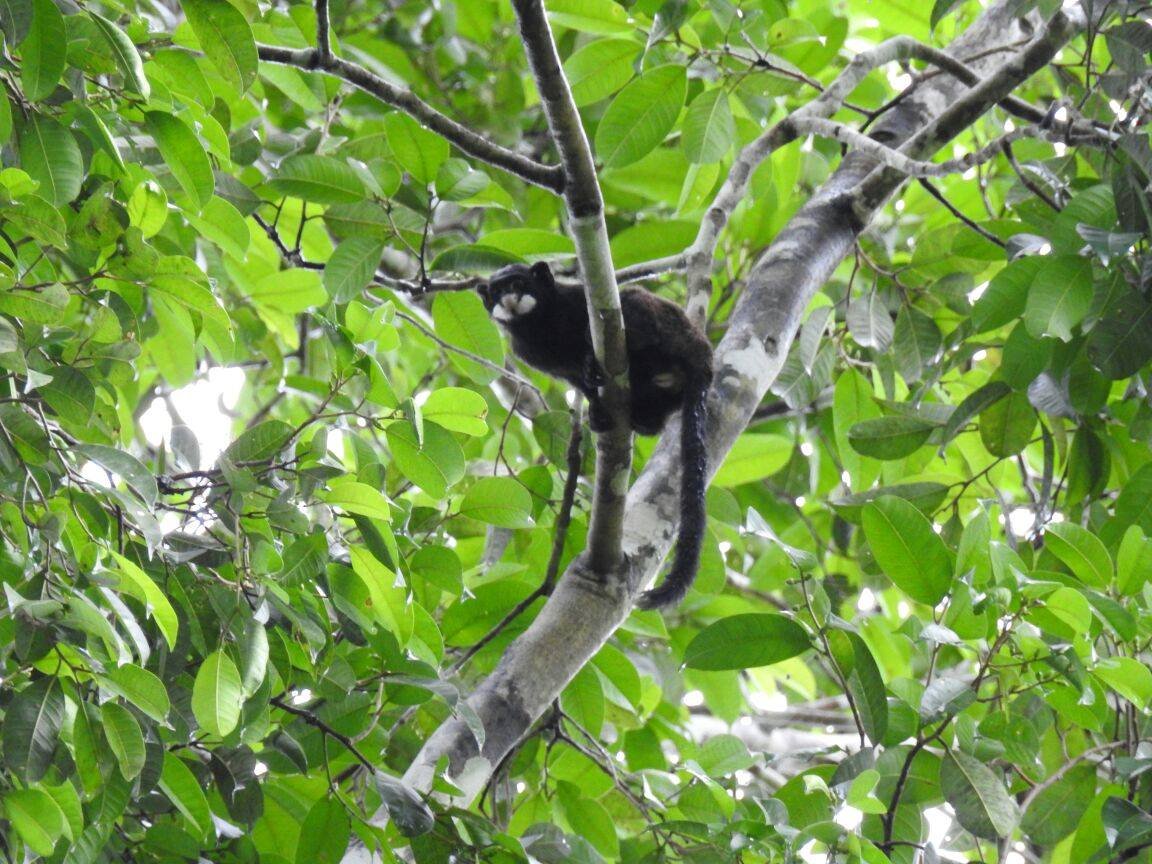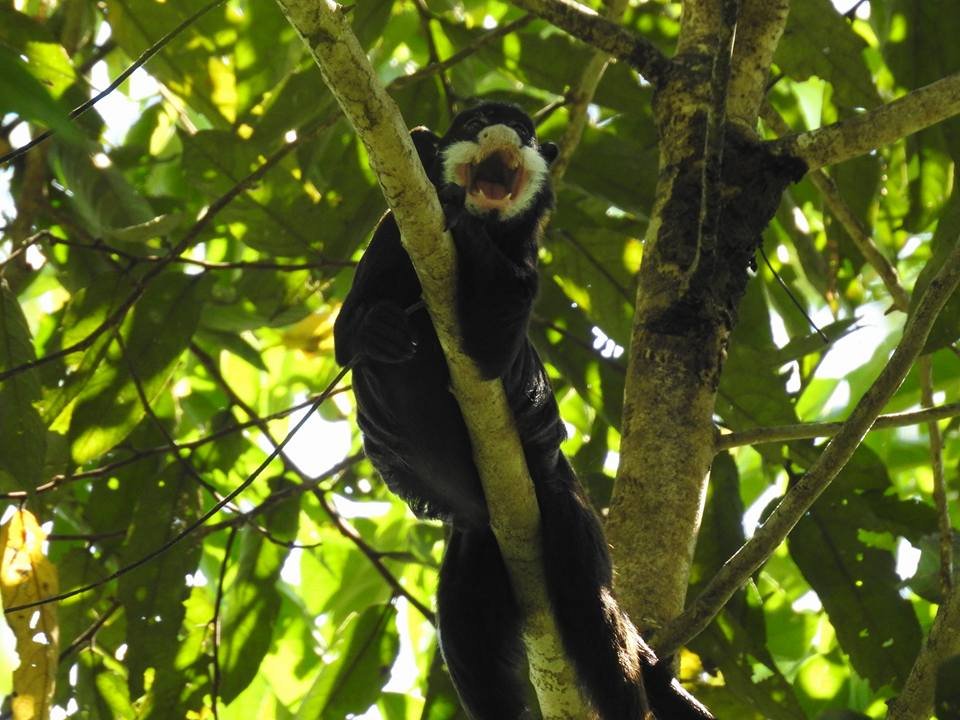white mustache tamarin (emperor tamarin)
Emperor tamarins are dwarf monkeys. Weighing only 500 grams, these small monkeys are easily identified by their long , white mustaches that extends from the sides of their muzzle resembling a prominent mustache. They have gray fur with yellow or gold highlights. Typically reaching only 9-10 inches in length while their tails are longer than their actual bodies, reaching around 14-16 inches. Their tails are reddish-orange and are used for balance and grip when moving through the trees.They possess claws on all fingers and toes except for the big toe, which has a nail. These enable them to hold on tightly to trees and branches, even vertically. Emperor monkeys also possess olfactory glands on their chest and genitals. Olfactory glands are vital for the sense of smell in monkeys, the glands secrete proteins, concentrate odorants ,as well as, have immune and defense properties.
Tamarins thrive in tropical rainforests and in mountainous regions. Emperor tamarins are found in the southwest Amazon Basin. This includes parts of Peru,Bolivia, and Brazil. They dwell in various types of forests, including lowland rainforests, mountain rainforests and seasonally flooded forests. These monkeys are arboreal, meaning they spend most of their time in the trees. Emperor tamarins are known for using hollow trees and natural cavities for resting and raising their young.
Tamarins live in groups of 2 to 15 individuals, often composed of breeding pair, their offspring from previous years and sometimes unrelated adult males. Males within the group play a vital role in raising the young, carrying and assisting the dominant female. Social grooming is common , strengthening relationships and bonds between group members. Tamarins also forage for food as a group and cooperatively defend their territories against other tamarins. Emperor tamarins sometimes live in mixed-species groups with other tamarins, such as saddleback tamarins, providing mutual benefits, including increased vigilance against predators ,more efficient foraging and strength in numbers.
Emperor tamarins are omnivorous, with a diverse diet. Primarily , emperor tamarins are frugivores, and most of their calories come from ripe fruits. Some females have a rare type of color vision that helps them spot the reddest and most ripe fruits. As far as obtaining protein , tamarins eat invertebrates, such as locusts, beetles, butterflies, spiders and ants. These monkeys are known to use stealth to approach and pounce on slow or visible prey. They also search for food by investigating leaves, palm fronds and branches. Their lightweight allows them to access the outermost, slender branches where heavier monkeys can’t go.
The small size of emperor tamarinds , makes them an easy target for natural enemies like snakes, birds of prey and wild cats. Snakes are able to stealthily find them in the trees. Predators like Jaguars and pumas hunt tamarinds actively . Other threats include deforestation and illegal pet trade. Emperor tamarinds are most vulnerable to illegal pet trade when they are small. However, it has been studied that emperor tamarinds have developed strategic survival tactics to survive between their mixed-species groups , vigilance and alarm calls,.


